Mini Transat Leg 1 AAR (Part 2)
Days 3-4: The Proving Grounds
As I mentioned at the conclusion of the After Action Report (Part 1), on the second evening of the Mini Transat there were clear skies, a rising full moon, and the wind was increasing from behind. Awesome conditions for Terminal Leave to surf down wave after wave. With the wind speed in the twenties and my smaller (slightly) A3 spinnaker flying, we were knocking out the miles as the evening transitioned into day 3 of the race.
Knowing this wind direction would not last forever and my relative position in the fleet, sleep was not going to happen. I stayed up all night hand steering most of the time to maximize the boat speed, surf waves, and prevent the boat from wiping out. While the auto pilot is great, it had difficulty with the boat being powered up and with the wave direction that night. Furthermore, when I start wiping out, or broaching, it is usually time to switch to a smaller sail.
Day 3 / 27 Sept (Bay of Biscay)
Early this morning, maybe around 0300, the wind continued to shift and I changed from the A3 spinnaker to the Code 0. Blast reaching towards the waypoint off Spain’s northern coast, with about 8 other Minis around, it was incredible. The boat loved this angle and I felt like I was passing some of my competition. I was tired but not letting up just yet. Throughout the morning the wind continued to shift right and I eventually was sailing a closed hauled course yet again.
Tracker position for early morning of Day 3; about 30 nm from waypoint and leaders. Note: The ghost boats on tracker are the protos (toggle on/off on the right of the screen)
During the final few miles to the waypoint, the wind continued to shift which forced me to tack twice. Between playing the local shifts and rounding as close as possible to the waypoint, which was an lat/long location with no physical mark, I feel I tacked in the right places as I gained leverage on the the few boats around me.
At 0906, I rounded the waypoint sailing upwind at about 5.4 kts on starboard tack in 12-15 kts of wind. It was a beautiful morning at sea, though damp and partly cloudy, with lots of Minis converging on this one area. Beating upwind, I was sailing faster and closer to the wind than the boats in my immediate vicinity. The Minis on the horizon started to come into view as I reeled them in. This moment felt good and helped give me that extra little boost I needed at the time. Passing this waypoint felt liberating as well, because now we could literally sail anywhere in the Atlantic Ocean as long as we stayed out of the shipping lanes (more on that soon) and made it to Santa Cruz de La Palma.
As I passed the waypoint, two groups were forming around me:
The first group, mostly made up of boats about 5-10 miles ahead of me tacked shortly after the waypoint to head off shore. I could hear some of them talking about it on the VHF radio and could see some their positions on AIS (which shows the position of Minis up to about 10-12 nm).
The second group, made up of approximately 4 boats ahead of me and another 4 behind, continued on starboard tack. I continued with this group, but kept that first group in mind because they were also ahead of us and clearly doing something right (or so I thought). Keep in mind, I am not differentiating between series and protos in these counts because at this point we are all generally sailing at a similar speed in my vicinity.
Deciding to tack at about 1100 UTC as two groups of boats split
~1100: As I approached a boat ahead of me, a few factors influenced my decision on whether to tack or not:
Over the past 15 minutes the wind had started to steadily shift lift, and I thought it might continue to do so for the next few hours.
I started sailing into the disturbed air coming from the Mini ahead of me. It was an older proto that I was reeling in over the past few hours.
I could see the Spanish coast ahead of me rising up, so I figured the boats in front of me would be tacking within the next hour or two.
With the windspeed increasing, I wanted to tighten the rig a bit because it was sightly looser than I what I needed in those conditions. I was able to add two turns on the leeward upper and lower shrouds, but needed to tack to tighten the other side and balance out the tension.
That first group also had not been lost on me, so I decided to tack and split the difference between the two groups. This allowed me to ride up the lift, tighten the rig, and manage the fleet in my vicinity.
Within a few minutes after the tack, the wind continued to increase from 18-20 kts to the mid twenties. As gusts started to reach 30 kts I added another reef in the main sail (2 reefs now), and reefed the jib.
With winds gusting to 30 kts mid day, by the late afternoon they settled to a managable high teens.
Critical Learning Point: This tack was my greatest regret tactically of the race, but a great lesson learned. I listed out so many points of why I thought I should tack, but failed to equally weigh the reasons why I should not have tacked.
That first group of boats was not as large as I thought it was while racing. Some of the chatter that I thought I heard from that group turned out to be boats just ahead of me, but I could not see their location on AIS. I distinctly remember misinterpreting when one skipper was discussing his “offshore route” with another competitor.
With the shifting wind, I ended up riding the inside of the lift (relative to the first group) and passed them all within about two hours when they tacked back. However, I did not realize at the time those were the same boats and thought a larger part of the fleet was still farther offshore.
This error in fleet management placed me as the farthest boat offshore (relative to my part of the fleet). With the wind continuing to shift left over the next few hours, I sailed the outside of the shift and lost miles of leverage compared to the boats that stayed closer to shore. On the tracker you can see the wind shifting around the NW tip of Spain (note: this wind depicted is not always 100% accurate).
I tacked with about 18 nm to shore, which was actually a point that looked much closer since it rose high out of the water. While no Minis got close to land, it was a poor assumption thinking the boats would be tacking out within the next hour or two. Many got lifted closer to land and did not need to tack. Those who did tack an hour after me still gained a significant advantage.
I could have short tacked to clear my air and tighten the rig, without moving all the gear down below, then tack back. Fleet management is key and I did not need to sail away from this closer group.
Overall, it was a high risk decision that did not pay off. I am not afraid to take risks, but need to continue to balance the possible outcomes with the information I have at the time.
A little insight into this part of the race…The funny thing now looking back is I initially did not remember anything from the rest of Day 3 or that evening. In fact, I started writing the next part about a front passing through thinking it happened latter that same day. After examining the tracker and my notes, I am missing about 20 hours of memory from this section of the race. I only realized it when making a video for this third day, that the time stamp on the GoPro video file was for the following day. A big part of this is because my log book got soaked and we were pounding upwind, which made it difficult to accurately write down everything happening (still not a good reason or excuse). After disecting the log, the tracker, and talking with other skippers, I think I have it all sorted out now!
Day 4 / 28 Sept (Bay of Biscay)
As day 3 turned into day 4, that evening the wind softened and was shifting between upwind and a close reach. The night was damp and everything felt wet above deck and below deck. My humidity reader down below was maxed out at 99%. There were times the boat just stopped moving due to a lack of wind and choppy sea state coming from multiple directions. At times it was painful mentally not being in control of the boat getting tossed around.
A slow sail going into the early morning of Day 4, at times only drifting at the speed of the current and maybe seeing just one Mini on the AIS display
At this point it feels like I am leaving the Bay of Biscay and sailing around the northwest coast of Spain, but we still have a ways to go. An important factor is we have the option to sail on either side of the Cape Finisterre Traffic Separation Scheme (TSS). Going around this TSS and farther offshore looked like a lot of extra distance and likely meant stronger winds with a front approaching. I decided to sail offshore a bit to manage both groups, but always intended to sail inshore between the TSS and the coast. [Note: only 1 series and 3 protos sailed outside of this TSS. Not THE winning move, but the series boat did end up 5th]
1300: Winds 30-35 kts, gusting to 40+ with big waves
As a front approached, I was beating upwind on port tack still paralleling the coast and remaining farther offshore than most of the fleet. The tracker does not accurately display the winds during this part of the race. To say it was a difficult day is an understatement. As I am traversing steep waves, the boat is wet and a mess. I had to get the code 0 off the deck and down below, which brought down a lot of water with it. I should have done this earlier, but was overly hopeful for another wind shift. Between the sail, a few waves splashing into the cockpit, and my own wet foul weather gear…the boat was soaking wet down below.
The cloud situation that day was interesting to note, and different from most of the other fronts I had sailed through in the area. Throughout the day I experienced a range from partly cloudy, to almost dark and overcast, and then to crystal clear skies where I could see clouds all around on the horizon. It was pretty wild sailing in steady 35 kts of wind with the bright sun shining for a few hours, I feel like that rarely happens in the Bay of Biscay. Not before long though, I was back into the clouds once more as the afternoon set on.
Shortly after tacking on the afternoon of Day 4. Note: the tracker states 28 kts of wind near Terminal Leave and never showed the 35 kts (gusting to 40+).
1430: Time to tack
Even though the wind direction was not great, I decided to start the process of tacking about 30 minutes before the 1500 weather forecast briefing. I wanted to head back closer to shore since I had not seen any Minis in a few hours and did not want to keep sailing away from the fleet. Tacking these boats in strong winds and big seas is not easy or a decision to take lightly. Physically it can be exhausting moving the gear stacked down below, takes time, slows the boat, and always has the risk of breaking something on board.
After a physically demanding 4 days of racing, the weather forecast was difficult to understand with multiple (four I think) high pressure systems in the area of interest all interacting with each other to create varying wind angle and velocities. With this forecast I was not truly confident on where to go exactly, other than I wanted to go between the TSS and the Spanish coastline. The rankings were also quite depressing to hear at the time too. For context, the rankings are captured at 7 UTC and broadcast at the end of the 1500 UTC weather briefing. The two previous nights I had pushed the boat and myself hard, trying to pass boats and gain any advantage possible. Despite the high (and low) speeds and quick sail changes, I was still in the back of the fleet. This was tough on me emotionally, but I was nowhere close to giving up on the racing and pushed ahead.
Watch the Day 4 recap on YouTube, click the video above!
As the evening came, the front continued to pass through and the wind slowly decreased from the thirties to the twenties. When the wind dropped to 15-18 kts it finally felt pleasant for the first time in a while! Unfortunately with the front passing through that also meant so too was the wind. Later than evening and into the morning, the wind speed ranged from 0-3 kts. With waves still rolling through, the mast and sails were constantly getting thrown from side to side, causing the boat to lose any power and speed. Everything on deck and below deck was damp and there was a slight chill in the air. I wore my Switlik Deck Suit (a dry suit) for about the next 12 hours which was awesome and kept me warm throughout the entire night. Thank you Switlik!!! I have worn this dry suit now three out of three times when rounding this NW part of Spain where the Atlantic Ocean meets the Bay of Biscay…this area is extreme! Even though the wind was light, I had to be prepared for it to quickly jump back up to 30 kts again, because you never know here.
This part of the race was a real test for all of the skippers, myself included. Mentally I struggled at times with the wind (then lack of wind), being wet, and being in the back of the fleet. I never took my foot off the gas peddle so to speak, but I had way too much time to contemplate each tactical and navigational decision up to that point.
I would learn a few days later that one of my fellow competitors had dismasted during the front, but made it safely to the Spanish coastline [he ended up retiring from the race]. The day prior to his dismasting, we crossed paths within a mile of each other, and he is a friend, so the reality of his situation hit close to home. Later on I discovered I was only about 20 NW of his location when he was dismasted.
While I was racing I also heard over the VHF radio another friend had to climb his mast in the large seas to tighten his leeward D2 shroud. The shroud going from his first spreader up to the mast (just below the second spreader) had unwound and came completely loose. He noticed it when the mast started making a strange noise as it was bending uncontrollably in the middle between each wave. A week later, shortly after the finish, his bruises were still visible from slamming into the mast while he tried to save his rig [which he did successfully!]. He said the first two threads took about 30 minutes to screw on….it is incredible the lengths Mini sailors (and most offshore sailors) will go to protect their boats. That is because the edge between racing and survival can quickly turn into a fine line.
Overall, I came out of the front unscathed and ready to continue racing the 1,000+ nm left on the race course. As the title states, this section of the race was the proving ground for the fleet. Surviving a front off the NW corner of Spain as you depart the Bay of Biscay can be more difficult than the next five days combined farther offshore. The power and force from the wind gusts, combined with the steep waves, has the serious potential to be boat breaking conditions. It is days like this in the Mini Transat which remind me why the race qualification process sets the bar high for entry. The fact that only one boat dismasted is a testament to the race organization’s decision making (start delay with an additional waypoint) and my fellow competitors’ years preparation.
Afternoon of Day 4, my view aft from below deck
Make sure to check out the AAR Part 3 where I sail around Cape Finisterre and along the coast of Portugal
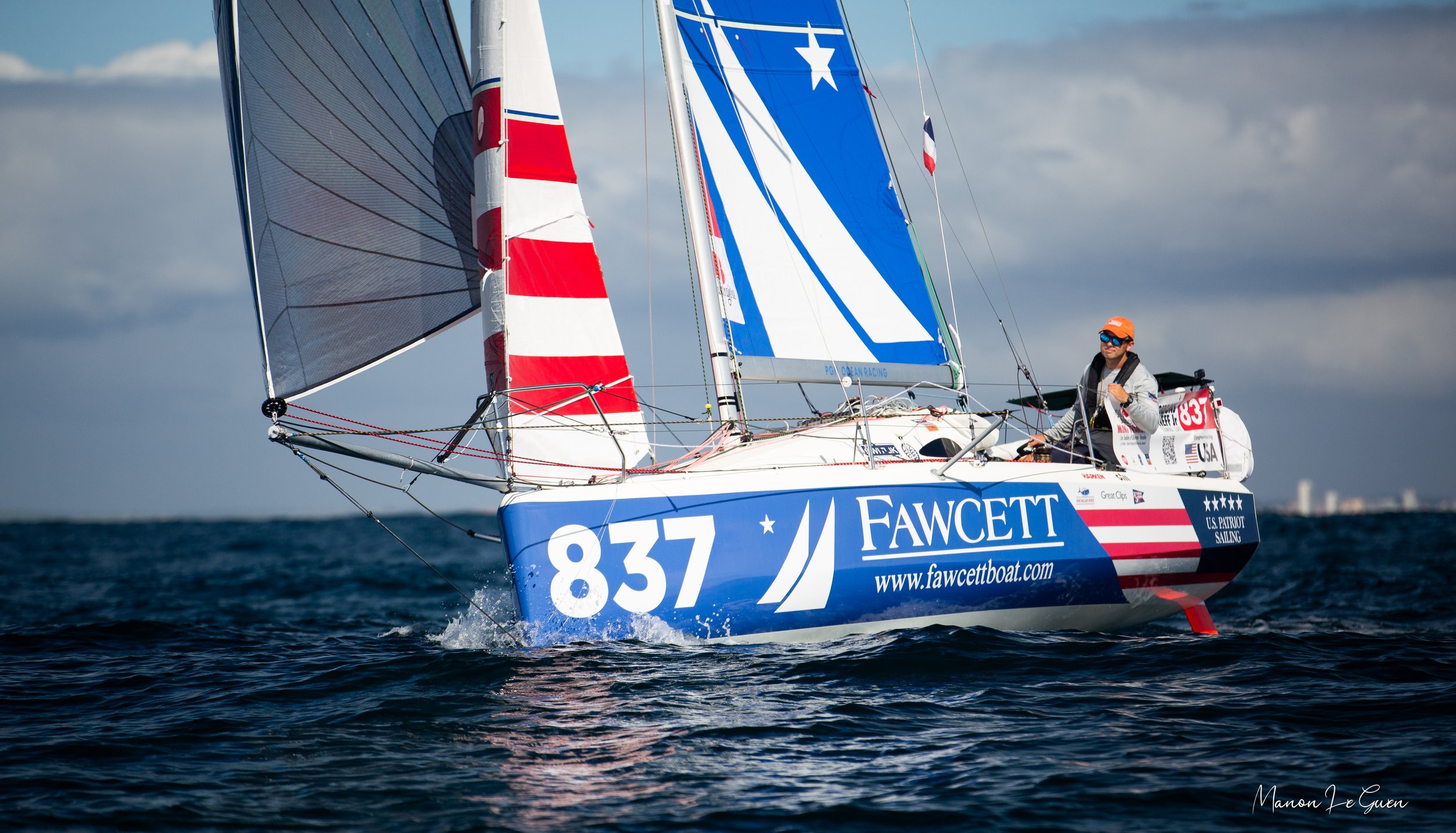
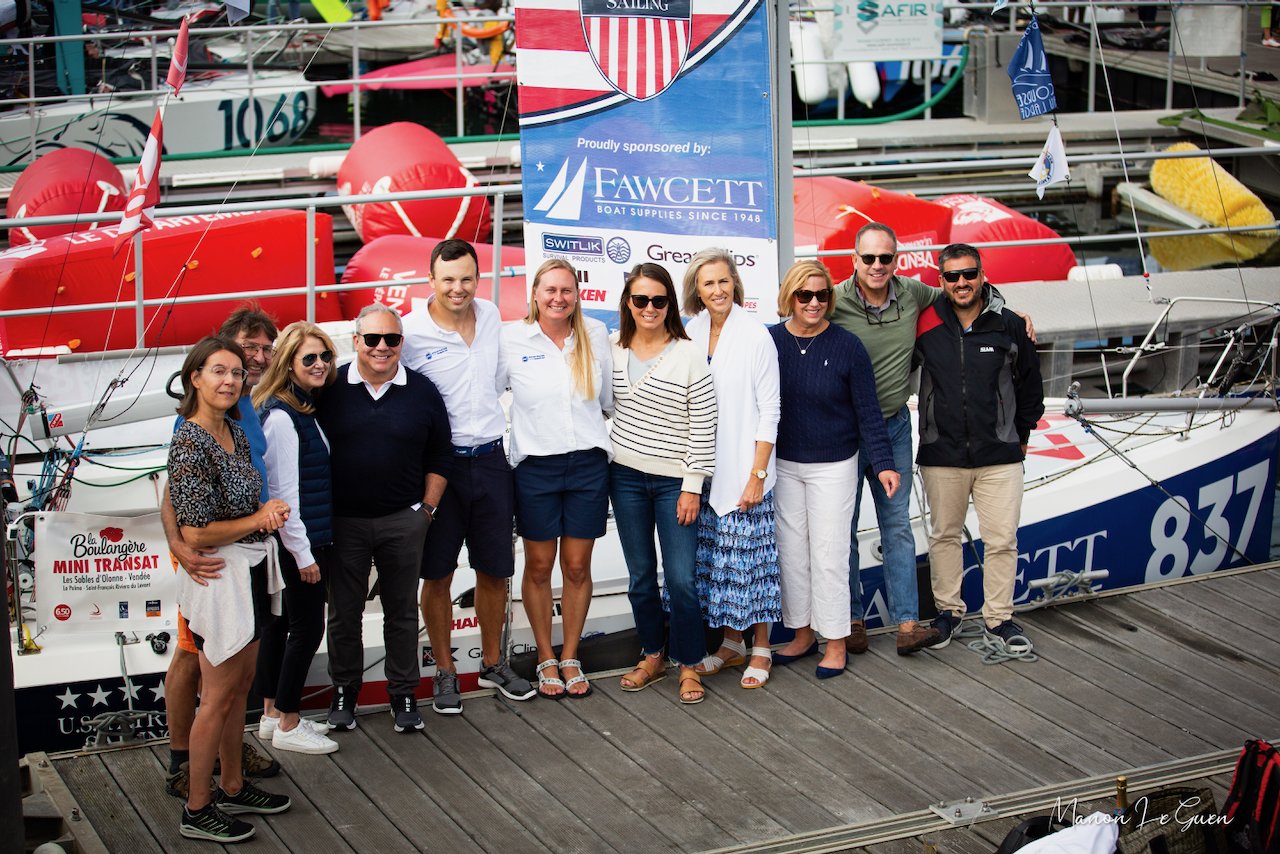
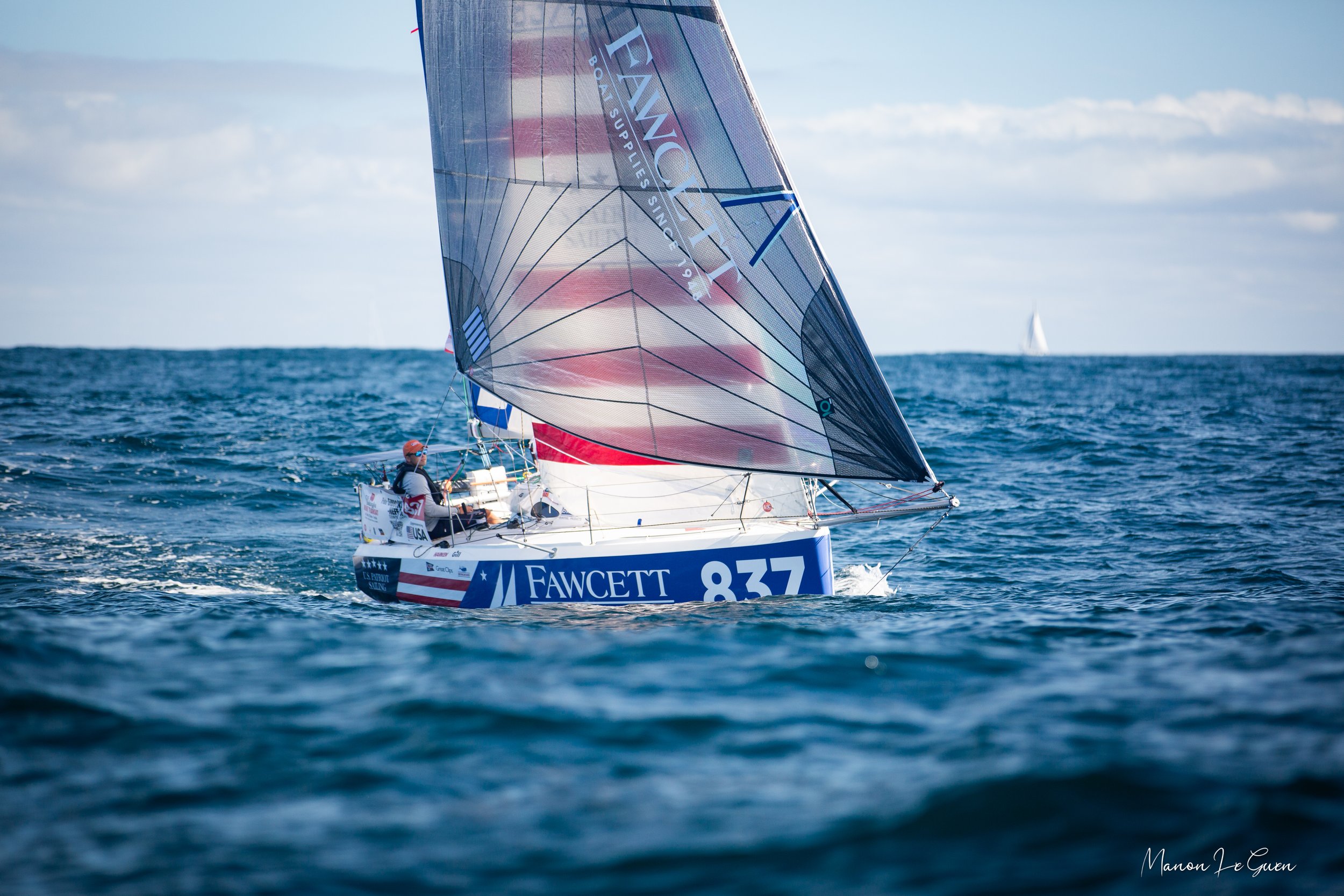
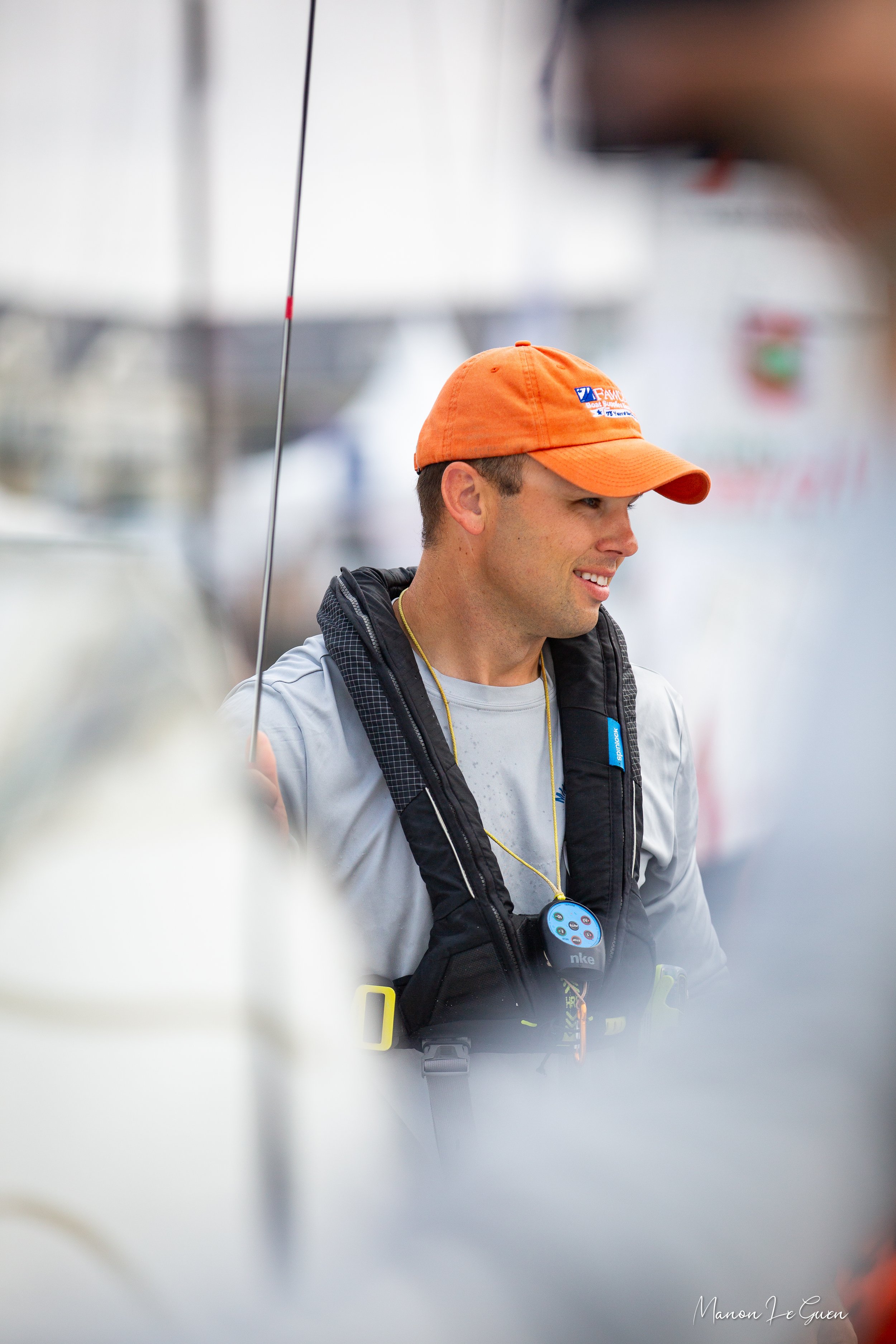
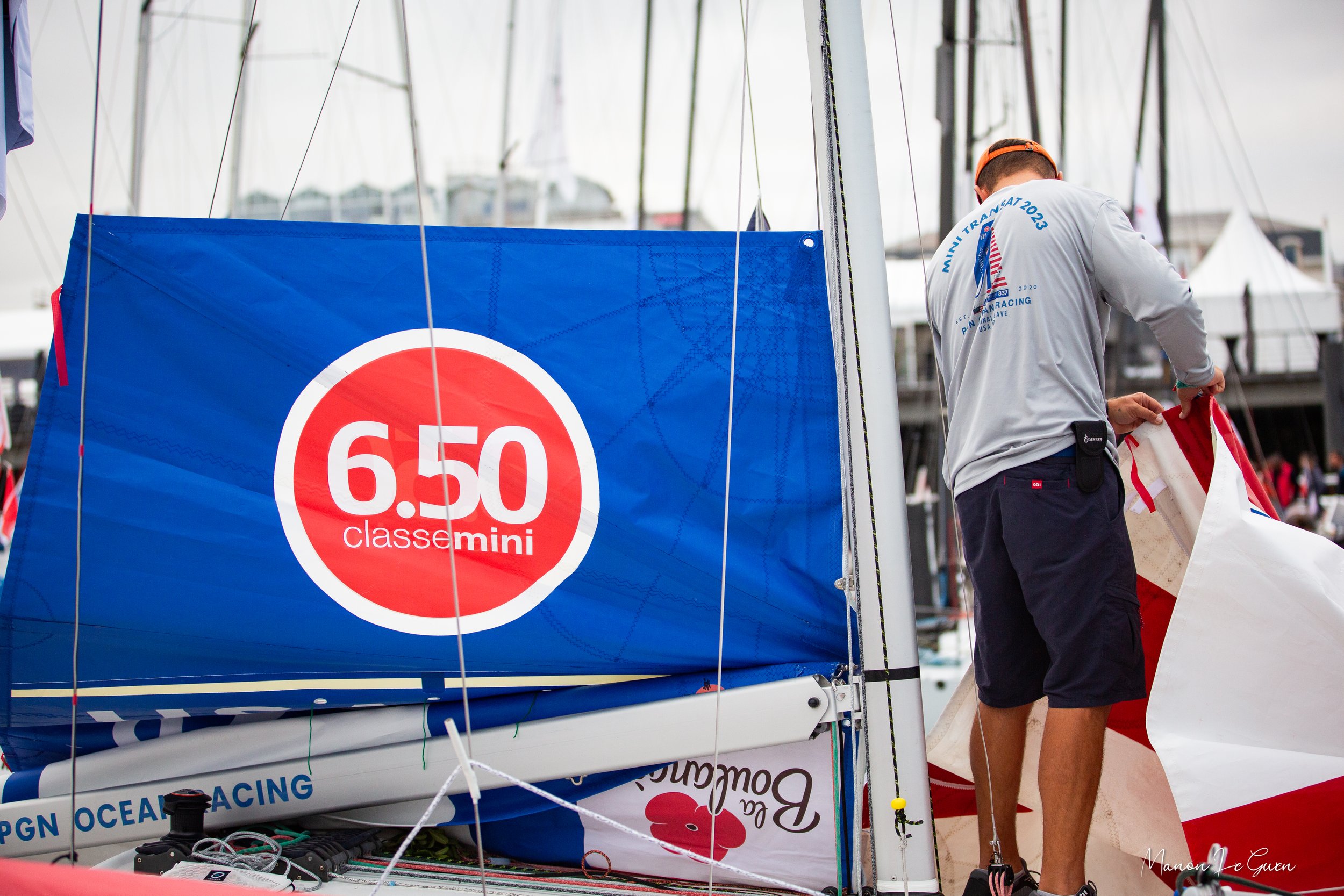
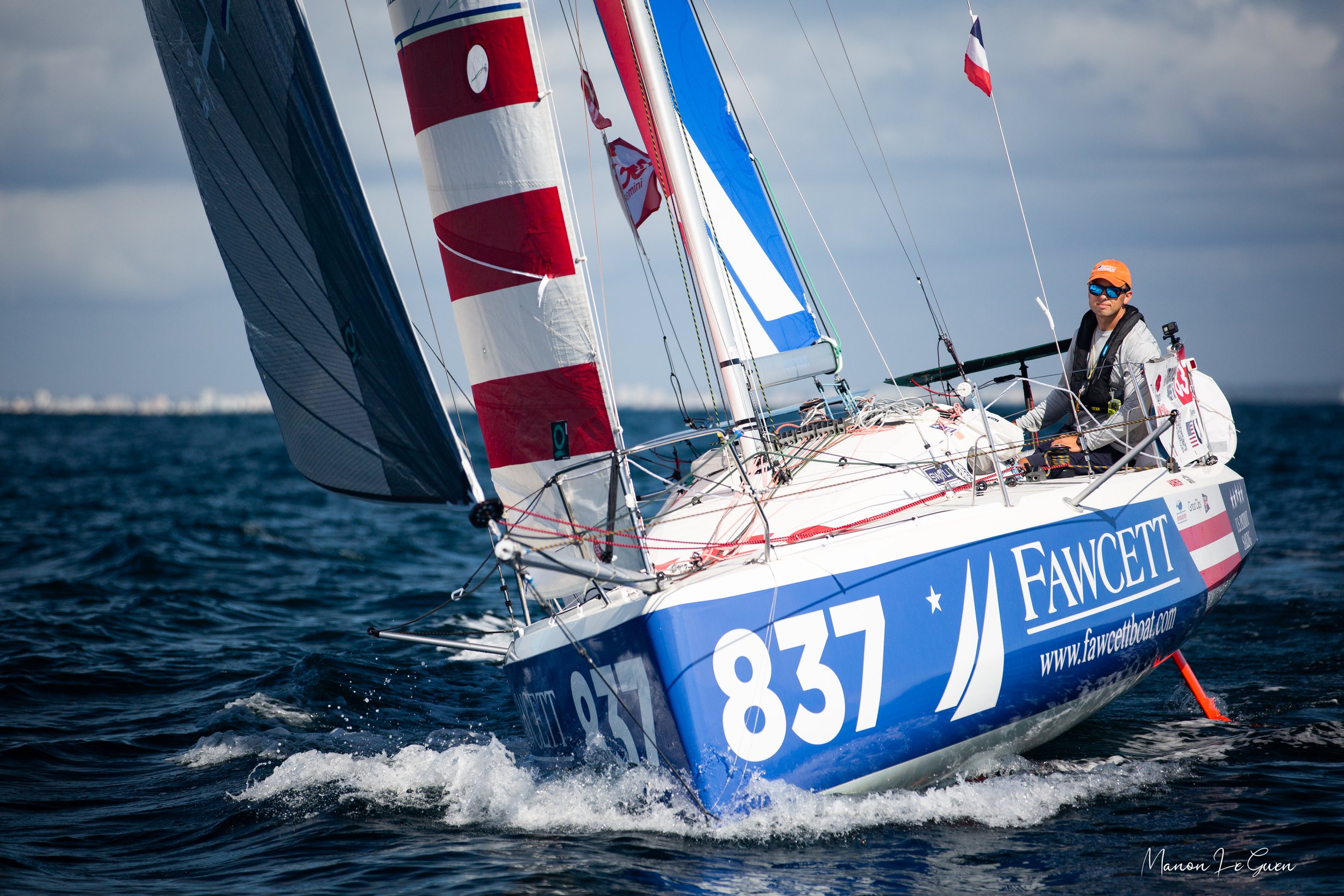

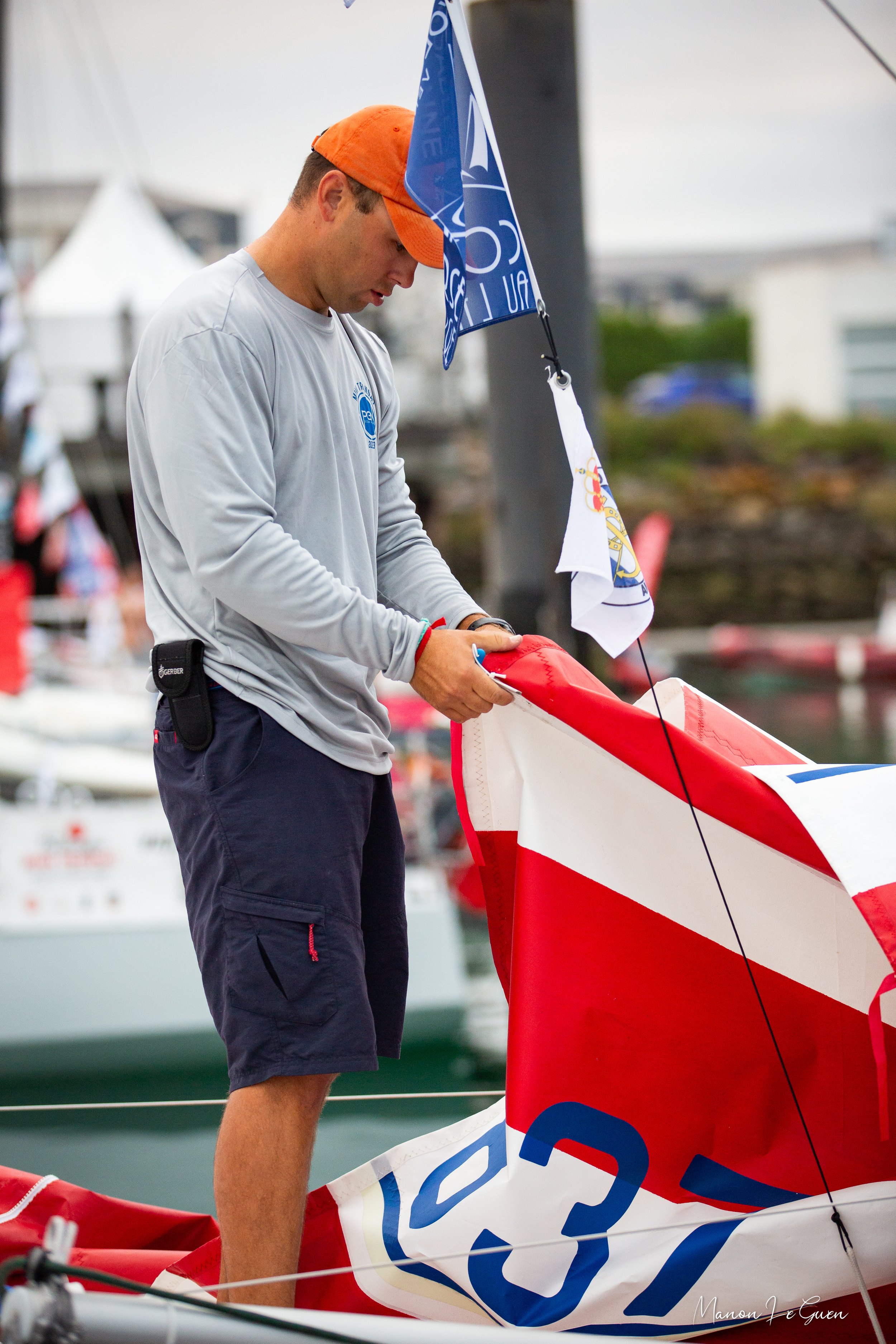
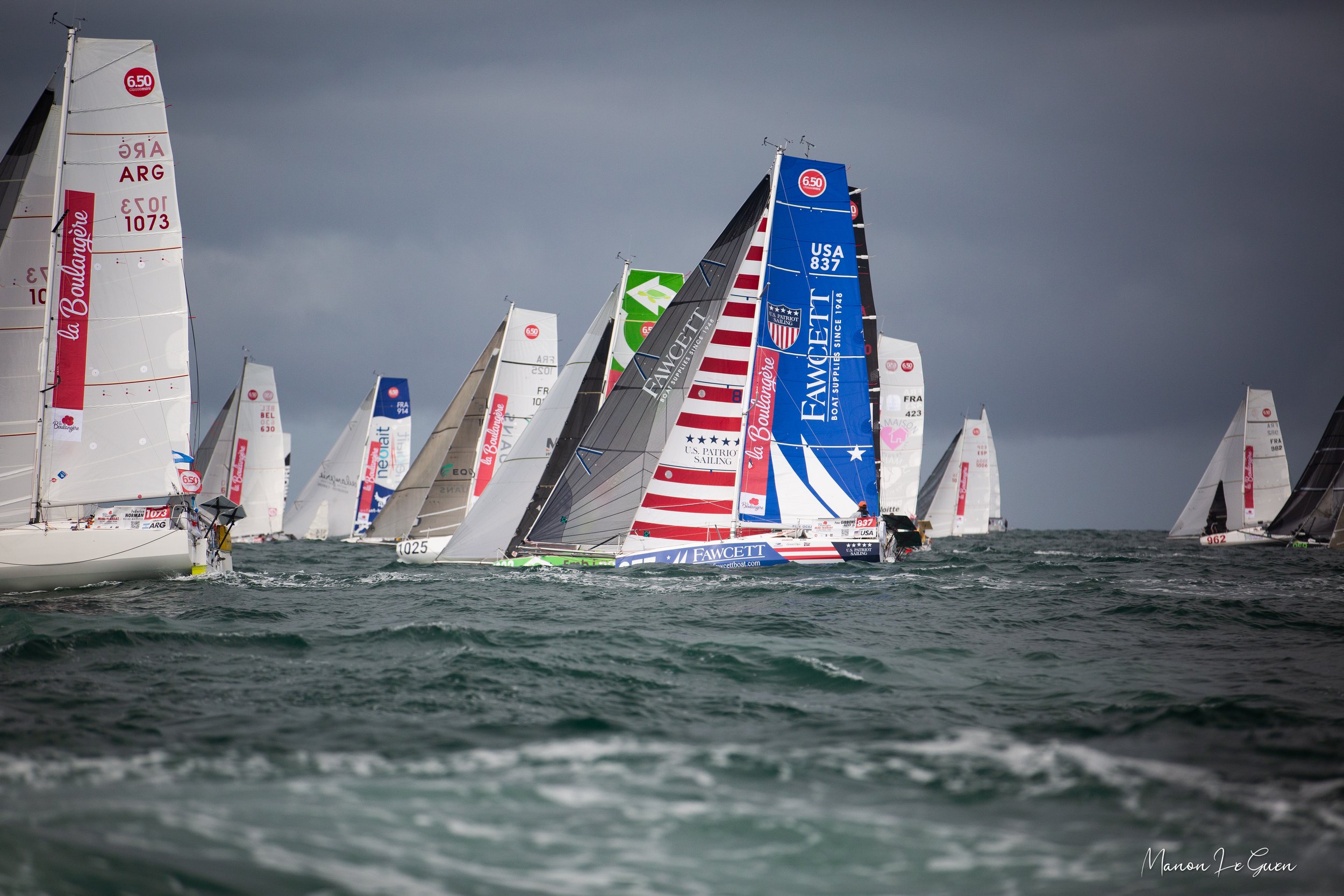
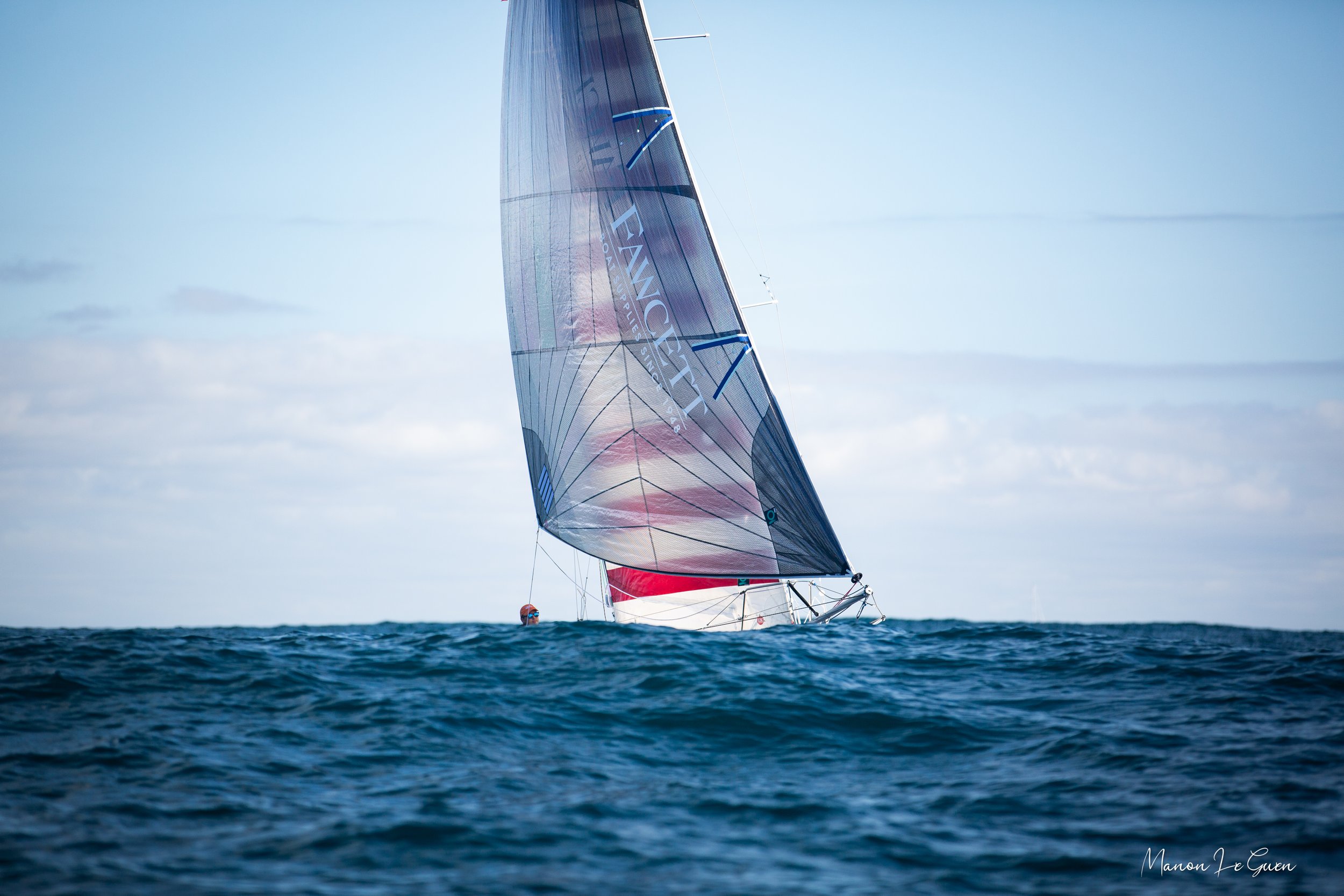
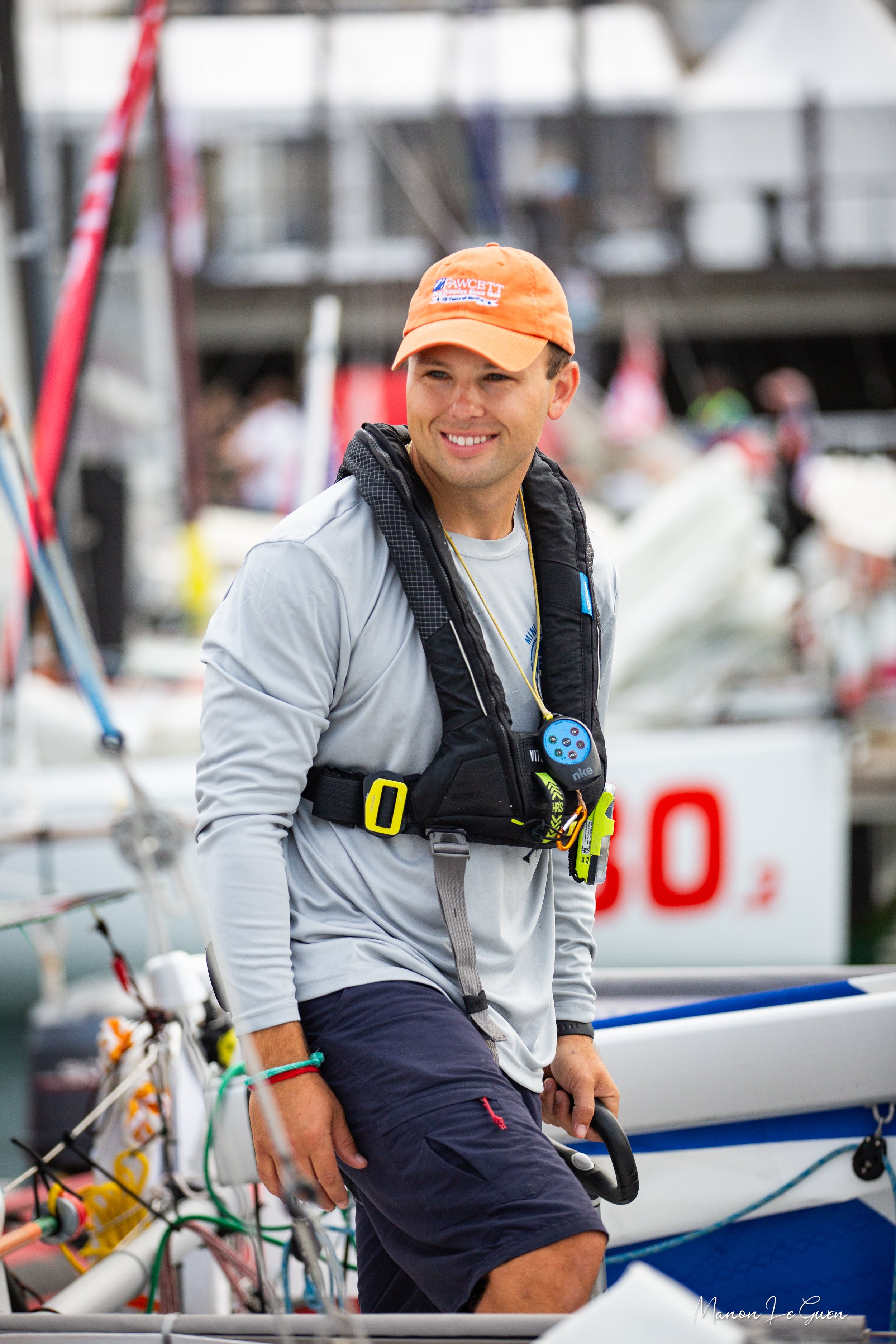
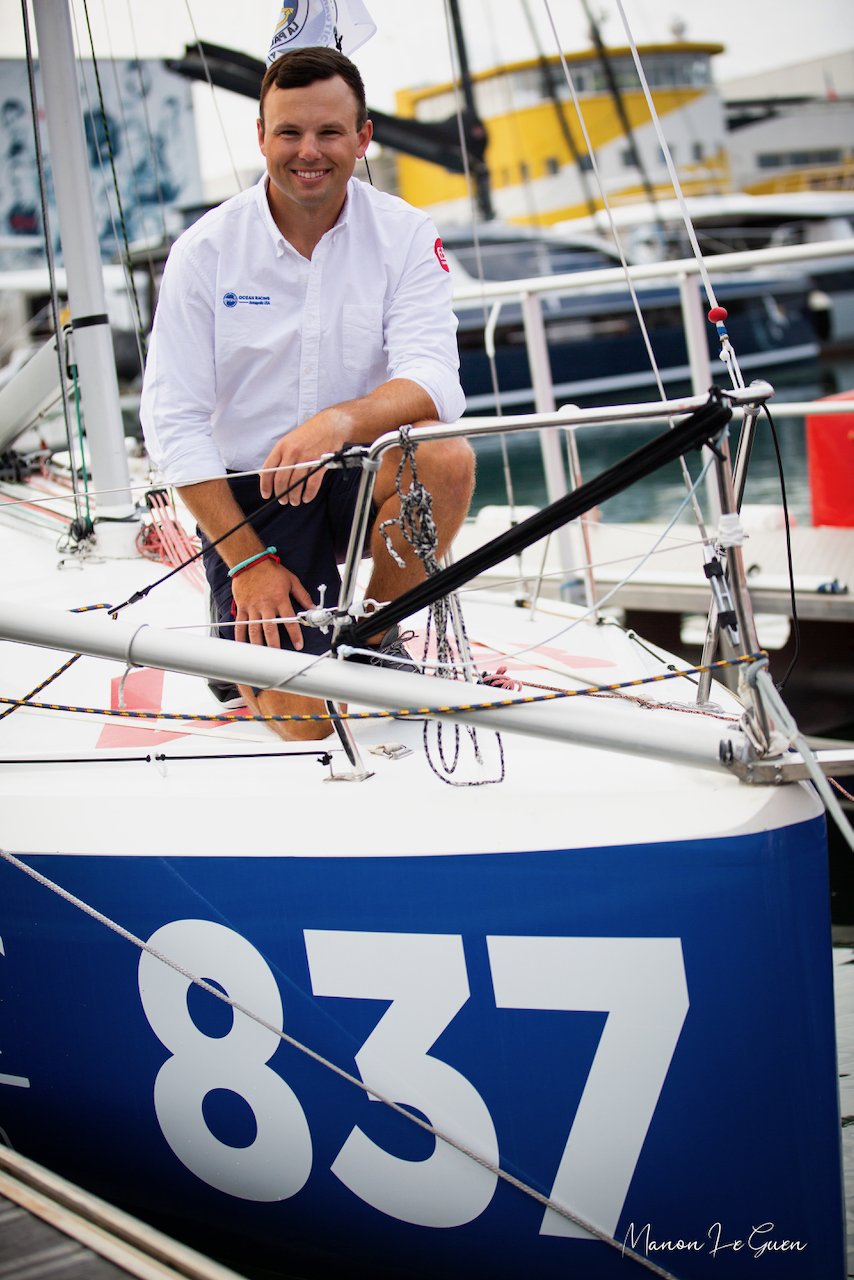

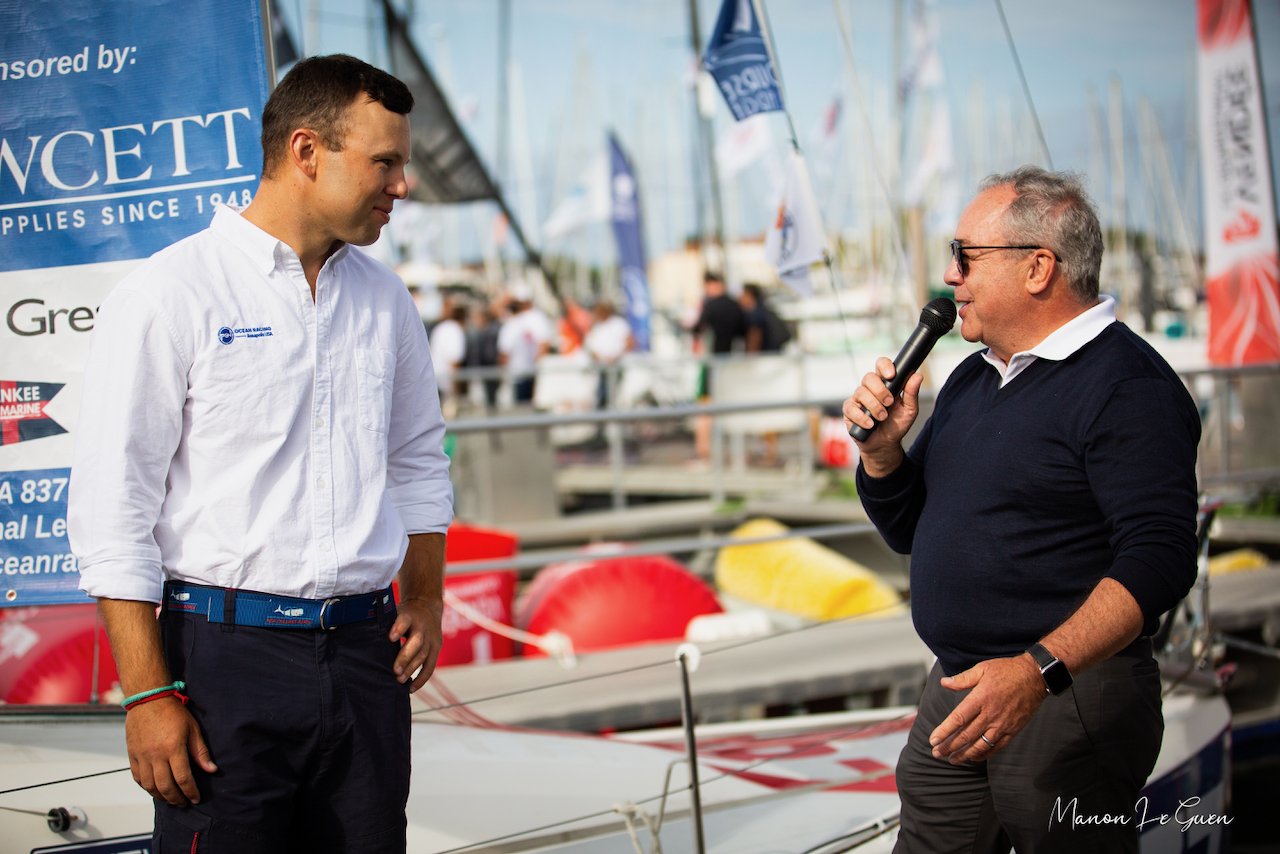
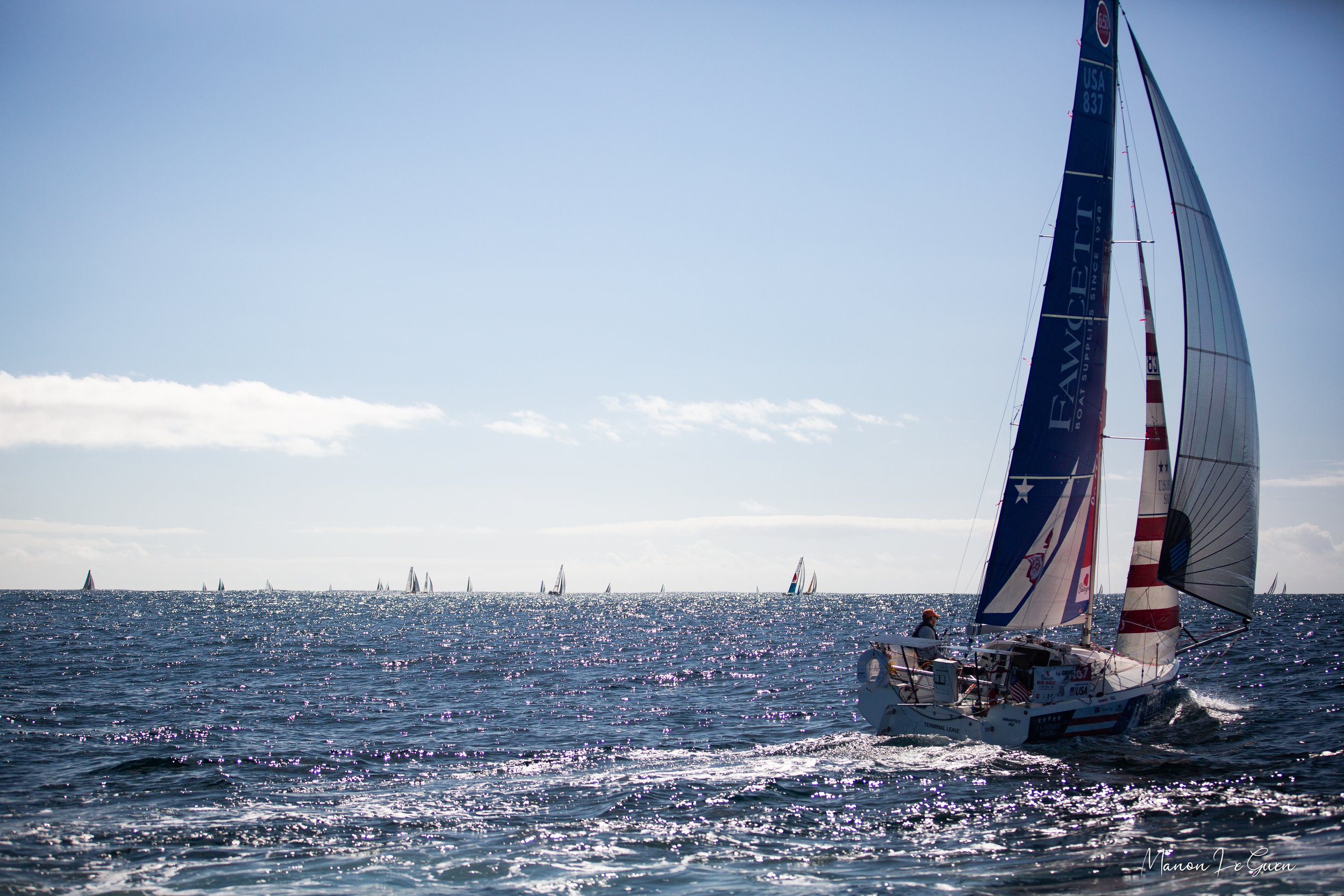
All images by Manon Le Guen from the departure from the pontoon and the start of the race.
Thank you to everyone who is following along and supporting this mission! We are grateful for the community that has rallied behind this campaign and I am proud to represent the USA and U.S. Patriot Sailing in this international race. We have reached the 51% goal for fundraising for the campaign but your donations to support this campaign are still needed, with changes in flights, logistics costs, and additional unplanned expenses that have added up quickly. Any support is greatly appreciated! Please click the Donate button below to support!
While we have some awesome sponsors, we still need your support to finish this mission. Every donation helps, THANK YOU!
If you are able to help, please consider donating through U.S. Patriot Sailing for a tax-deductible donation or through our GoFundMe page.
Learn More Here: www.pgnoceanracing.com/donate
I am racing in the Mini Transat as an ambassador for U.S. Patriot Sailing to raise awareness for this incredible non-profit team.
U.S. Patriot Sailing
Supports the veteran community navigate the hardships of transition to civilian life, rehabilitation after injury, and the complex life challenges associated with combat deployments. The organization accomplishes its mission by welcoming veterans back onto a winning team, provides camaraderie, a sense of mission accomplishment, and new dynamic experiences
Are you following PGN Ocean Racing on Facebook, Instagram, and YouTube Yet?






